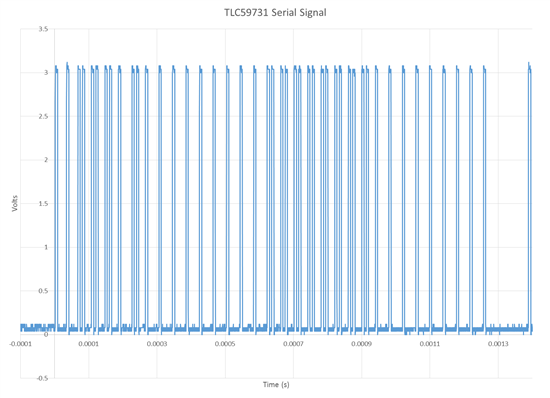Hi,
I am attempting to use a TLC59731 to light up a string of RGB LEDs, but am unable to make any of them light. There are 4 LEDs in the string, with an LED voltage of 19V. Forward voltages are as follows:
- Red: min 1.7V, max 2.3V
- Green: min 2.7V, max 3.7V
- Blue: min 2.7V, max 3.5V
There are 220ohm resistors in series with each string. I'm using a 3.3V supply connected to Vcc, with a 0.1uF decoupling cap. The serial input is being driven by a Cortex-M4 microprocessor. I've attached an excel document of the waveform, and included a picture of it below. I have triple checked it against the datasheet, and I believe it's being driven properly. Do you have any thoughts on what may be going wrong? I can also supply other captures, if it would help.
Thanks,
Gregg



